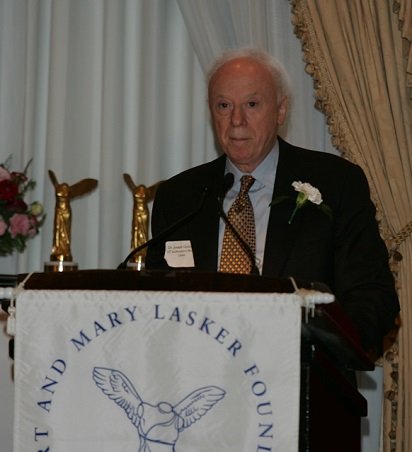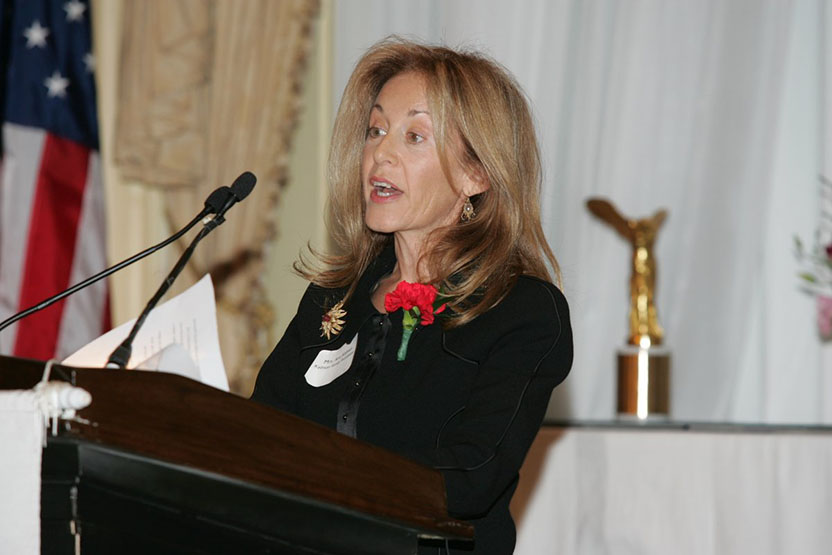
Charles D. Kelman
New York Medical College
For revolutionizing the surgical removal of cataracts, turning a 10-day hospital stay with high morbidity into an outpatient procedure with minimal complications.
The 2004 Albert Lasker Award for Clinical Medical Research honors an ophthalmologist who transformed cataract surgery. By devising a relatively noninvasive procedure for removing a flawed lens, Charles Kelman replaced a high-risk operation that required a lengthy hospital stay with a 10-minute outpatient procedure. This procedure is now the most frequently performed surgery in many countries of the western world. It aids about three million people annually in the United States and approximately the same number in Western Europe — figures that are increasing as the population ages. Kelman's innovation of removing a relatively large piece of tissue through a tiny incision paved the way toward similar 'keyhole' surgeries on many other parts of the body.
Cataracts are the single most common preventable cause of blindness in adults. Before Kelman's breakthrough, cataract surgery was a grim prospect. To rectify the cloudy vision that characterizes cataracts, surgeons cut the eye almost half open to remove the blemished lens. Bleeding, retinal detachment, and infection commonly threatened to destroy vision. Recovery required more than a week of hospitalization, with the patient's head immobilized by sand bags. Other complications arising from a lengthy hospital stay and the inability to move — blood clots, bedsores, and muscle atrophy — made the procedure a major ordeal. At home, weeks of recuperation followed. Eventually, the patient would receive ultrathick glasses to compensate for the absence of the lens. In addition to their lack of cosmetic appeal, these spectacles distorted and magnified objects.
Award presentation by Joseph Goldstein
 More than half of us here today will eventually develop impaired vision caused by cataracts. There are no drugs, no eyedrops, and no "Eyekins" diet that will make a cataract disappear; the only treatment is surgical removal. Historically, cataract surgery is one of the oldest operations, second only to circumcision.
More than half of us here today will eventually develop impaired vision caused by cataracts. There are no drugs, no eyedrops, and no "Eyekins" diet that will make a cataract disappear; the only treatment is surgical removal. Historically, cataract surgery is one of the oldest operations, second only to circumcision.
Prior to 1970, cataracts were the leading cause of blindness in the United States. Today, cataracts are no longer a significant cause of blindness — thanks to Charles Kelman, this year's recipient of the Lasker Clinical Medical Research Award.
Acceptance remarks by Ann Kelman

Acceptance remarks, 2004 Lasker Awards Ceremony
It is with mixed feelings that I humbly stand here before you to accept this prestigious honor on behalf of my husband. Our family is extremely proud of Charlie's dedication, persistence, and relentless belief that phacoemulsification would greatly improve the quality of life of cataract patients. We are honored that the scientific community, specifically the Lasker committee, has recognized his contribution. And sad, that although Charlie knew he was nominated, he never knew of today's honor.
Charlie always believed that the journey was as important as the destination. He knew of the many letters written by colleagues worldwide to support his nomination. This gave him some satisfaction, and for us there is comfort in this knowledge. Many times, Charlie told me how happy he was to see phacoemulsification become the accepted, safe cataract operation, and he always added that he never expected that it would impact ophthalmology and general medicine as it has. In November 2003, the American Academy of Ophthalmology celebrated 35 years of phacoemulsification. It was the last honor Charlie received personally. Please allow me to read excerpts from his presentation.
